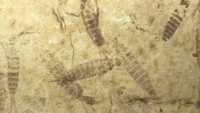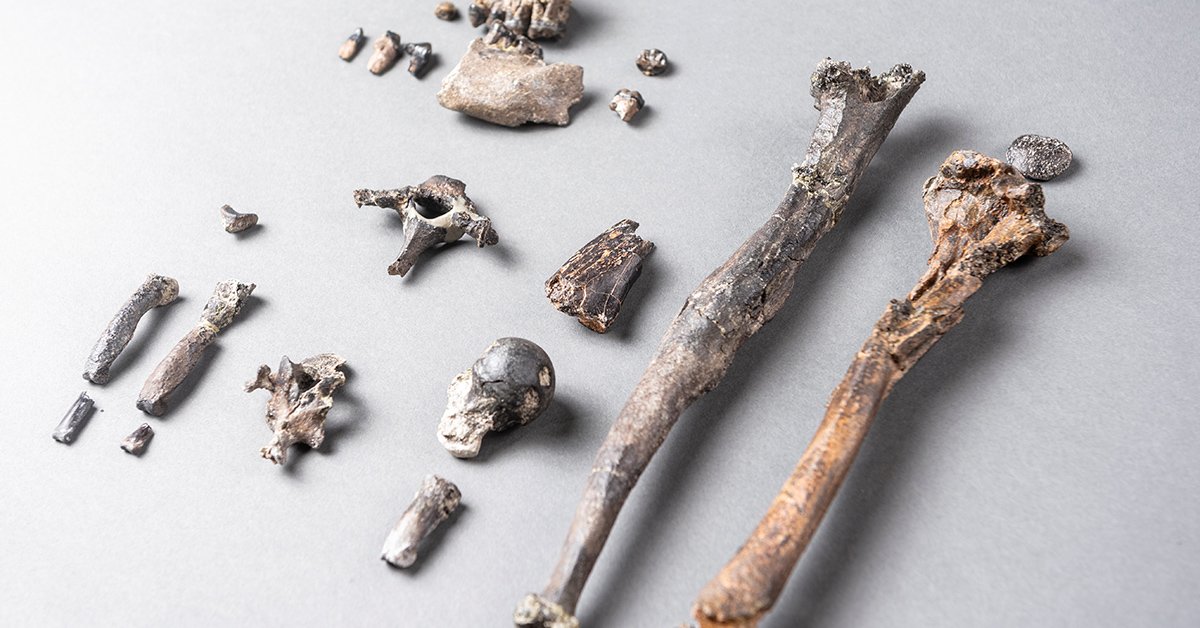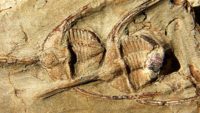A new analysis of a small pair of T. rex-like fossils, called Nanotyrannus, shows they were actually teenage T. rexes. Holly Woodward, from Oklahoma State University, and her colleagues reporting in Science Advances, counted the growth rings in the leg bones of the two Nanotyrannus specimens. Their results showed the specimens were not a new species. Rather, they were just 13 and 15-year… More… …read more Source: icr.org
By Troy Lacey Uranium-lead radioisotope dating is now the preferred absolute dating method among geochronologists. But there are several problems with this particular radiometric dating method. …read more Source: AIG Daily
Can uniformitarianism be saved from the drastic incompleteness of the rock record under long-age assumptions? …read more Source: creation.com
By Ken Ham More and more scientists and researchers are shocked by the discovery of fossilized soft tissue (or, even more incredibly, unfossilized soft tissue!) in creatures thought to have died millions of years ago. These findings don’t fit the narrative most of us learned in school: a creature is slowly buried by sediments, gradually becoming fossilized. Instead, such fossils point to rapid, catastrophic burial. And a new find points, yet again, to catastrophic burial. Fossilization is a catastrophic process, as something has to be buried quickly. Researchers uncovered the fossils of tiny bug-like creatures that are buried in so-called [More]
By Dr. Andrew A. Snelling How could neat uniform sedimentary rock layers be deposited during the Flood cataclysm with all the fast-moving waters? …read more Source: AIG Daily
A new review paper published in the journal Expert Review of Proteomics summarizes 85 reports of organic remains in fossils.1 Some of the reports describe whole tissues like blood vessels, dried but intact skin, and connective tissues on or inside fossils like dinosaur bones. Other reports describe whole cells like red blood cells and bone cells. Other reports in the review paper describe biochemicals specific to animals… More… …read more Source: icr.org
By Dr. David Menton Transitional forms in the fossil record are rarely, if ever, observed. This lack of evidence is very damaging to macroevolutionary theory. …read more Source: AIG Daily
By Bodie Hodge Exploring the history of the water vapor canopy model, biblical interpretation surrounding the model, and how we should approach theories in biblical creation. …read more Source: AIG Daily
Carved as Noah’s Floodwaters receded …read more Source: creation.com
Do ancient fossil feathers found near the South Pole actually belong to dinosaurs? Or is this another National Geographic fantasy? …read more Source: creation.com
By Ken Ham Some people don’t believe in a global flood. Since the geological revolution in the 1800s—driven by naturalistic, deistic, agnostic, and atheistic assumptions—some Christians have been attempting to fit the long ages into Scripture. Since the geological revolution of the 1800s—when deistic, agnostic, and atheistic scientists working from the assumptions of naturalism began to suggest long ages for the earth and its fossil record—some Christians have been attempting to fit the long ages into Scripture. That idea has many of its own problems (such as putting death before sin), but it necessarily entails another belief: Noah’s flood was [More]
How the Bible’s short timescale unlocks the long-standing mystery for secular scientists of what causes an ice age …read more Source: creation.com
Evolutionary scientists continually search for evidence to support their claims of an evolutionary relationship between birds and dinosaurs. Their most recent attempt involves a new bird fossil named Fukuipteryx prima, found in Japan.1 Publishing in Communications Biology, Takuya Imai and his team, from Fukui Prefectural University, described the new bird species they extracted in 2013 from Lowe… More… …read more Source: icr.org
By Ken Ham They’ve found a missing link! . . . at least that’s what the headlines (once again) will tell you! A recent study trumpeted the discovery of a supposedly 11.6-million-year-old ape from what is now Germany. Danuvius guggenmosi allegedly had “long arms suited to hanging in trees, [and] features of its legs and spine suggest it might also have been able to move around on its hind feet.” It’s now being hailed as the earliest evidence of bipedalism (habitual walking on two legs) and now upends the evolutionary timetable for bipedal evolution. So, did they find …read more [More]
By Dr. Andrew A. Snelling The evidence for grossly accelerated radioisotope decay during a past cataclysmic event such as the Genesis Flood has been well established. …read more Source: AIG Daily
By Ken Ham Scientists studying fossil deposits in Morocco recently announced a stunning new find—a series of trilobites (sea creatures, also called ancient cockroaches, now believed to be extinct), fossilized in a single-file line. It looks as if the trilobites were playing, “follow the leader.” That’s the observational evidence. But how to understand these fossils is a matter of interpretation. After all, the fossils don’t come with a tag on them telling you what happened and when. And your interpretation depends on your starting point. The scientists studying these fossils approached the evidence from a naturalistic and evolutionary perspective. Since [More]
Scant bone fragments from a cave on Luzon island suggest yet another fossil human, not an evolutionary intermediate. …read more Source: creation.com
By Dr. John H. Whitmore The cross-bedded Coconino Sandstone (lower Permian, Arizona) is often used as a “type” ancient eolian sandstone. …read more Source: AIG Daily
Their survival is hard to explain, but after a little digging, answers start to emerge. …read more Source: creation.com
Each time a fossilized creature with legs is found mingled with fossil sea creatures, a new quandary for evolutionary history presents itself. When the same situation surfaces many times, that quandary multiplies. Discoveries like a new and relatively complete hadrosaur from Japan keep testing secular scientists’ skills to imagine ways whole dinosaurs could have fossilized. These findings also happen to make slick-fitting pieces of the Bibl… More… …read more Source: icr.org
No proof for evolution-Archaeotherium pre-Flood pig, and Onychonycteris turns out to be yet another species of bat. …read more Source: creation.com
By William Worraker The Genesis Flood produced drastic geological changes involving extremely energetic processes which also generated an enormous heat load. …read more Source: AIG Daily
Can they be formed catastrophically? …read more Source: creation.com
A recent poll of college-age Americans showed that the single most convincing science-based argument for evolution is the lineup of supposed ape-like evolutionary ancestors of mankind.1 But epidemic disagreement among researchers over the relevance and position of every thus-far-proposed human ancestor undermines confidence in this fluctuating and fragmented fossil lineup. Creation researcher Marvin Lubenow called it “the fake pa… More… …read more Source: icr.org
A trio of scientists used sterile techniques to collect 17 dinosaur fossils. They searched deep inside the specimens for original, still-soft tissue remnants. What did they find? Their Edmontosaurus (a species of hadrosaur) fossils came from where the Hell Creek Formation outcrops at the Standing Rock Hadrosaur Site in South Dakota. There, bits of hadrosaur bone poke through the sediment at a cut bank of the Grand River…. More… …read more Source: icr.org
By Bodie Hodge Is the earth 4.5 billion years old or only 6,000 years old as the Bible teaches? More importantly, how can we know the age of the earth? Get answers! …read more Source: AIG Daily
New find suggests that several australopithecine species may just be variations of the same kind. Evolutionists are now unsure how to reconstruct the supposed human evolutionary tree. …read more Source: creation.com
















































